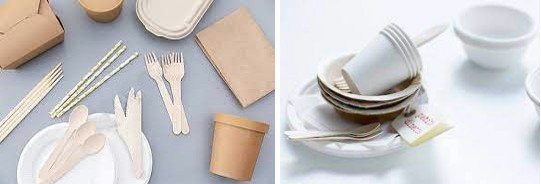People take food as their heaven. Different regions, different historical cultures will have a certain impact on the culture of table etiquette, which also forms cultural differences. By comparing these differences, we can better conduct cross-cultural communication and accelerate the spread and exchange of cultures.
Going back to history, the cultural communication between China and the West has been reflected in all dynasties and dynasties, and the most representative form is undoubtedly the cross-cultural communication in terms of dining etiquette. China is a civilized country of ancient etiquette, and the performance of its dining etiquette is rooted in the eating customs handed down from the ancient feudal society. The Western dining etiquette originated from the cultural input of foreign countries to the country, which is relatively delicate and complicated.
The origin of Chinese etiquette
Etiquette originated in the primitive society period and was the earliest religious sacrificial activity. Because people cannot scientifically explain some phenomena of nature (such as thunder and lightning, mountain jumps, earthquakes, etc.), they are in awe of nature. Therefore, some sacrificial activities are used to express their worship, and they are also used to pray for good weather, blessings and disasters. In the middle and late period of primitive society (about the Paleolithic period) the germs of other early forms of ritual appeared. For example, the cave people of Zhoukoudian, Beijing, who lived about 18,000 years ago, used perforated animal teeth and stone beads as ornaments and hung them around their necks. Hematite powder is scattered around their deceased tribesmen to hold primitive religious rituals, the earliest funeral rituals found in China so far.
Origin of Western Etiquette
Western etiquette first germinated in medieval Greece. The development of etiquette was originally a court rule, and later spread rapidly in the United States, and was rationalized and standardized in people’s lives by Western countries led by the United States. specification.
Chinese and Western catering culture is the fundamental embodiment of Chinese and Western cultural traditions. It is precisely because of the differences that there is a fusion and collision with economic culture as the background. Find the differences, conduct a general understanding and analysis, and finally apply them to cross-cultural communication, which will lay a solid foundation for realizing their practical significance.

Chinese and Western catering culture
- Culture is not only a common expression of a social group, but also its unique behavior. From ancient times to the present, food has been an indispensable aspect of our survival and life. However, due to different cultural influences in different regions and different traditional concepts, people have many forms of differences in the process of eating.
- In China, a country with a long history, Chinese food culture has a long history. Chinese table etiquette began with Zhou Gong, and after thousands of years of evolution, in the long table history, a perfect table etiquette has gradually formed.The West also has its own characteristics, the origin of Western culture and oceanic culture, worship of God, and certain food culture affects its eating habits.
Table greetings difference
The first sentence of greeting people in Chinese is “Have you eaten yet?”. Westerners’ first words are “Hello” or “Nice to meet you”.

Table greeting difference
Dietary differences
The dishes on the Chinese table are rich, mainly meat. Western dishes are monotonous, but pay attention to the combination of meat and vegetables.

Dietary differences
Clothing differences
The Chinese prefer casual gear, except for special occasions. On the other hand, Westerners are very particular about dressing and prefer to wear slim-fitting clothes and formal clothes.

Clothing differences
Cutlery differences
There are mainly six kinds of tableware in Chinese food: cup, plate, bowl, plate, chopsticks and spoon. At a formal banquet, the water glass is placed on the upper left of the plate and the wine glass is placed on the upper right. Chopsticks and spoons can be placed on a special seat or in a paper sleeve. Common chopsticks and spoons are best placed on dedicated seats; Western food is eaten with a knife and fork. Hold the fork in the left hand and the knife in the right; when cutting something, hold the fork in the left hand and hold the food, and hold the knife in the right hand to cut it into small pieces and put it into the mouth with the fork. When using a knife, the blade must not be facing outwards.

Cutlery differences
In addition, for cleanliness and convenience, many restaurants will provide disposable tableware, especially degradable tableware, which is becoming more and more popular. The reason why merchants choose degradable tableware is that it can effectively prevent the cross-infection of infectious diseases through unclean tableware and prevent diseases from entering through the mouth; it also has many advantages such as being not easily broken. Disposable tableware, which has become the fast food industry in today’s society, is also widely welcomed by young people today. A lot of bacteria and germs infection caused by improper cleaning of tableware have been eliminated.

Disposable tableware
This also brings inconvenience to the cross-cultural exchanges between China and the West. Understanding these differences and analyzing the cultural factors behind them will help us maintain a good image in international exchanges and promote mutual understanding and cooperation between China and the West. It is the key way to become good neighborly friendship.
Key words: Chinese and Western; table manners; chopsticks; spoon; knife; fork; disposable tableware; degradable tableware;






Thanks for sharing~